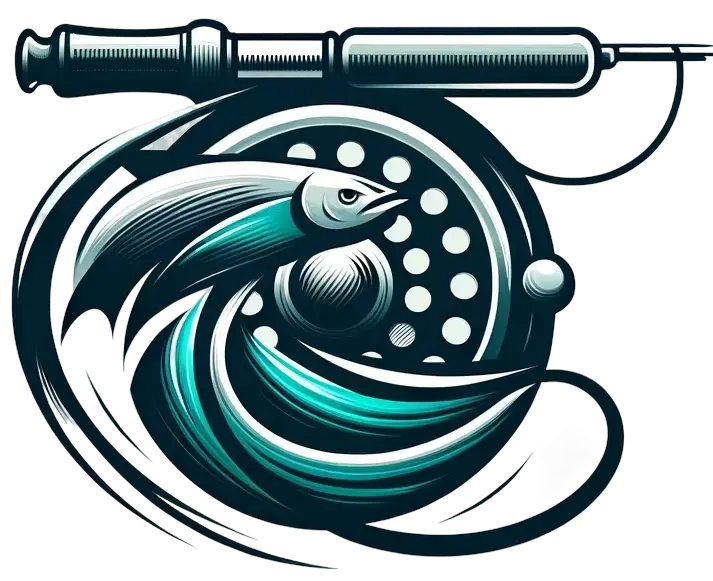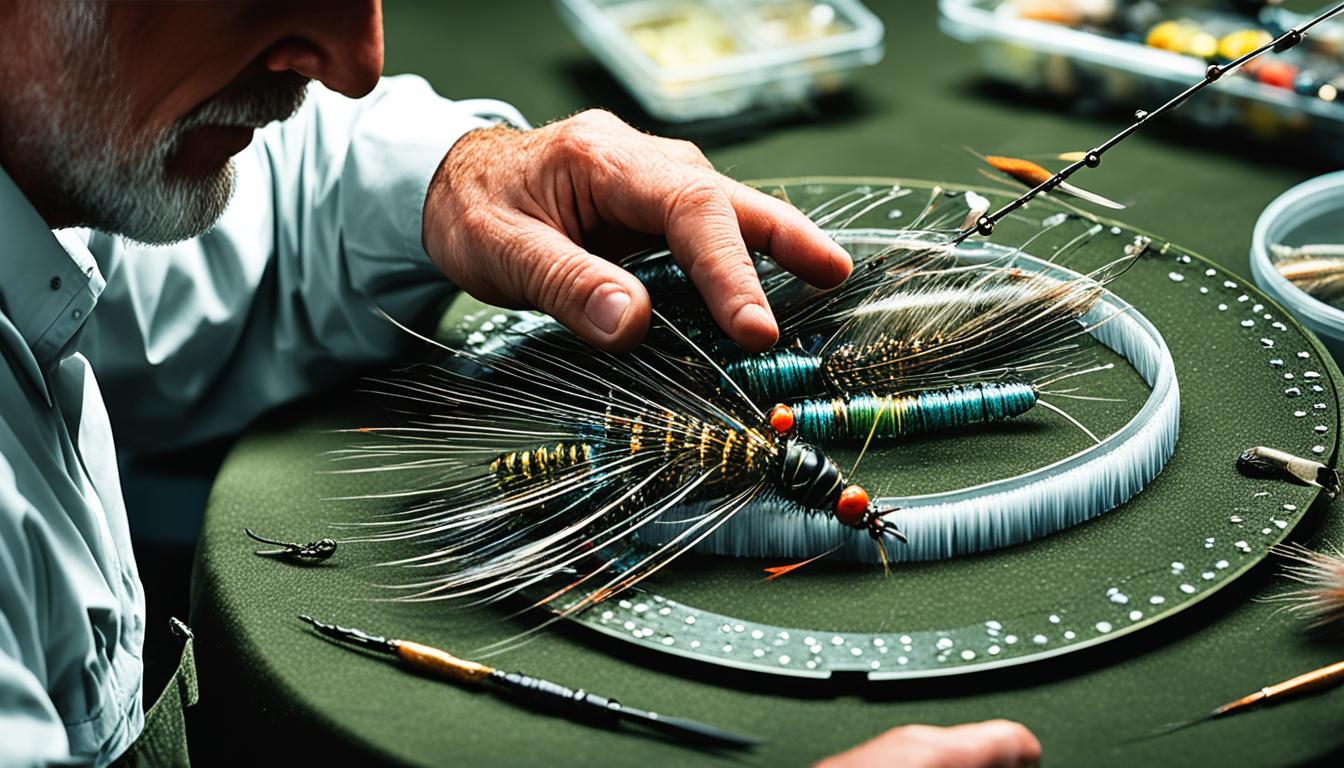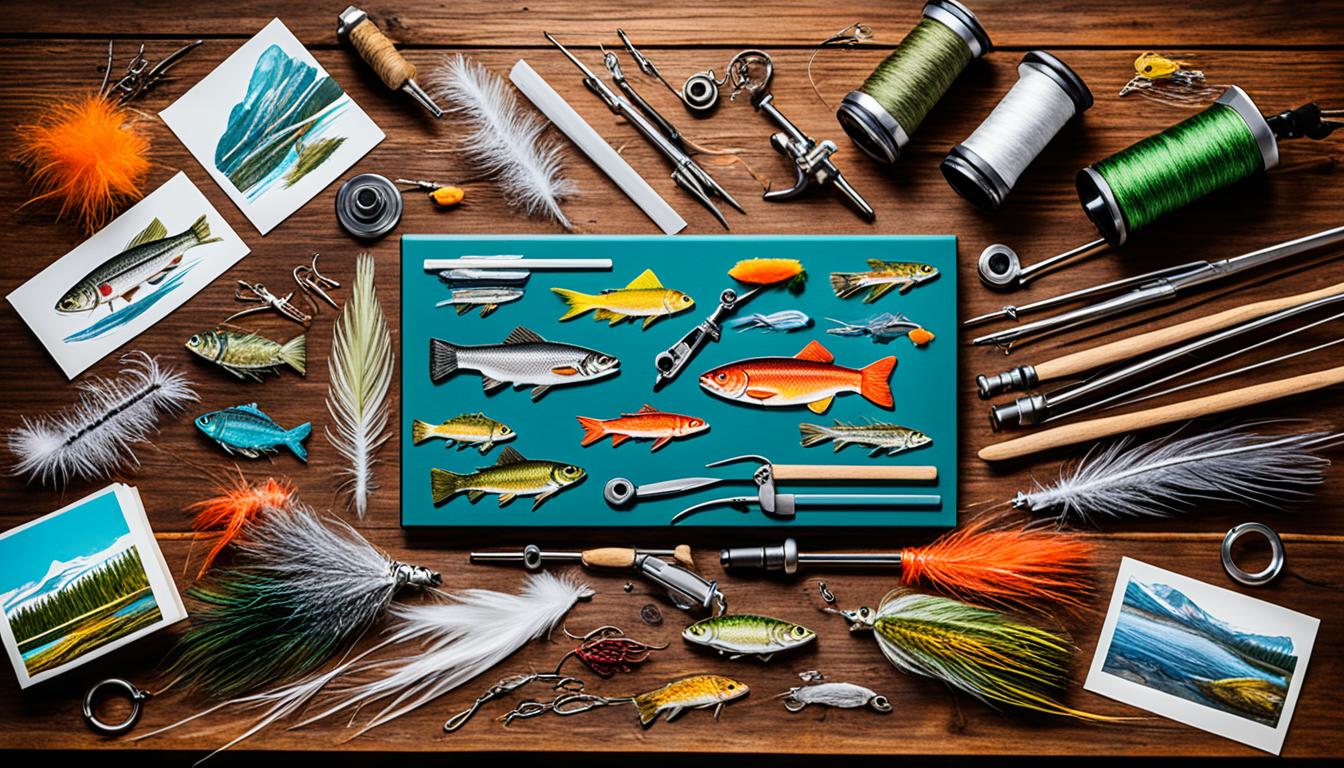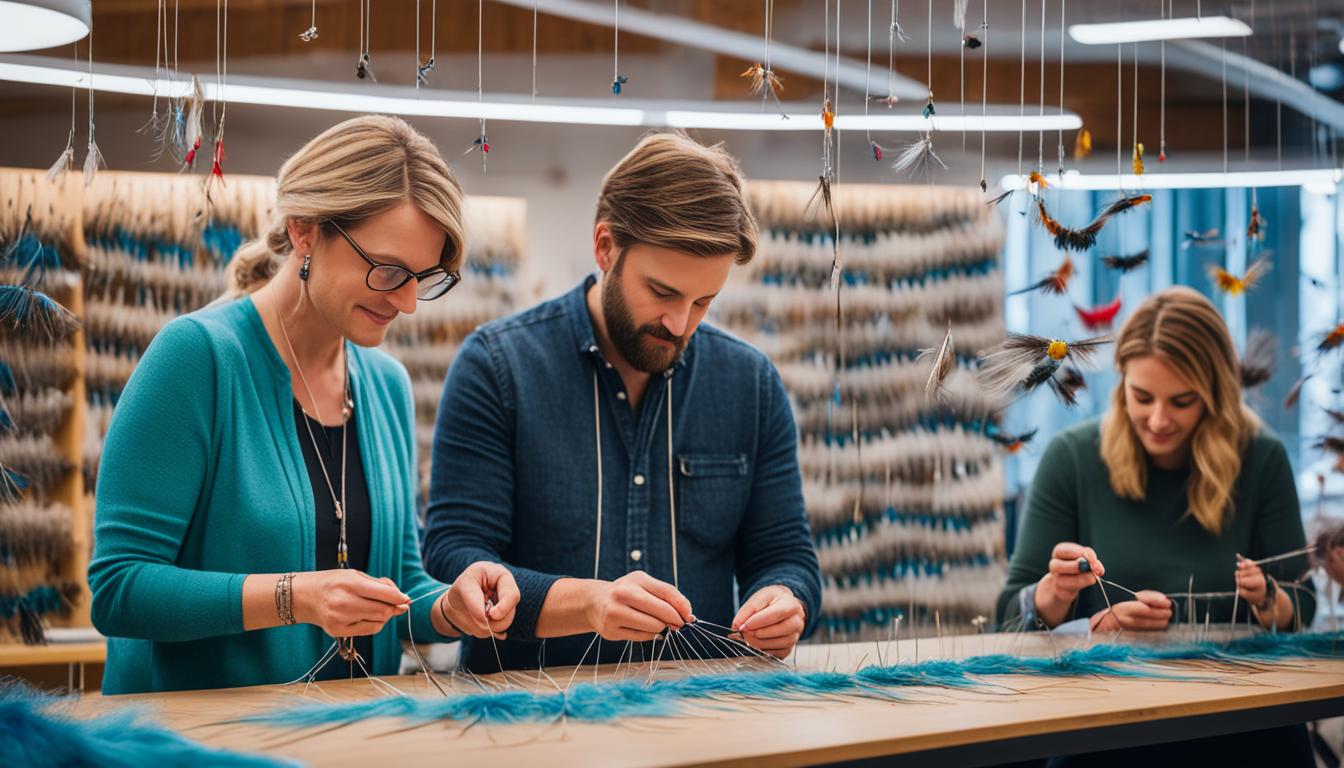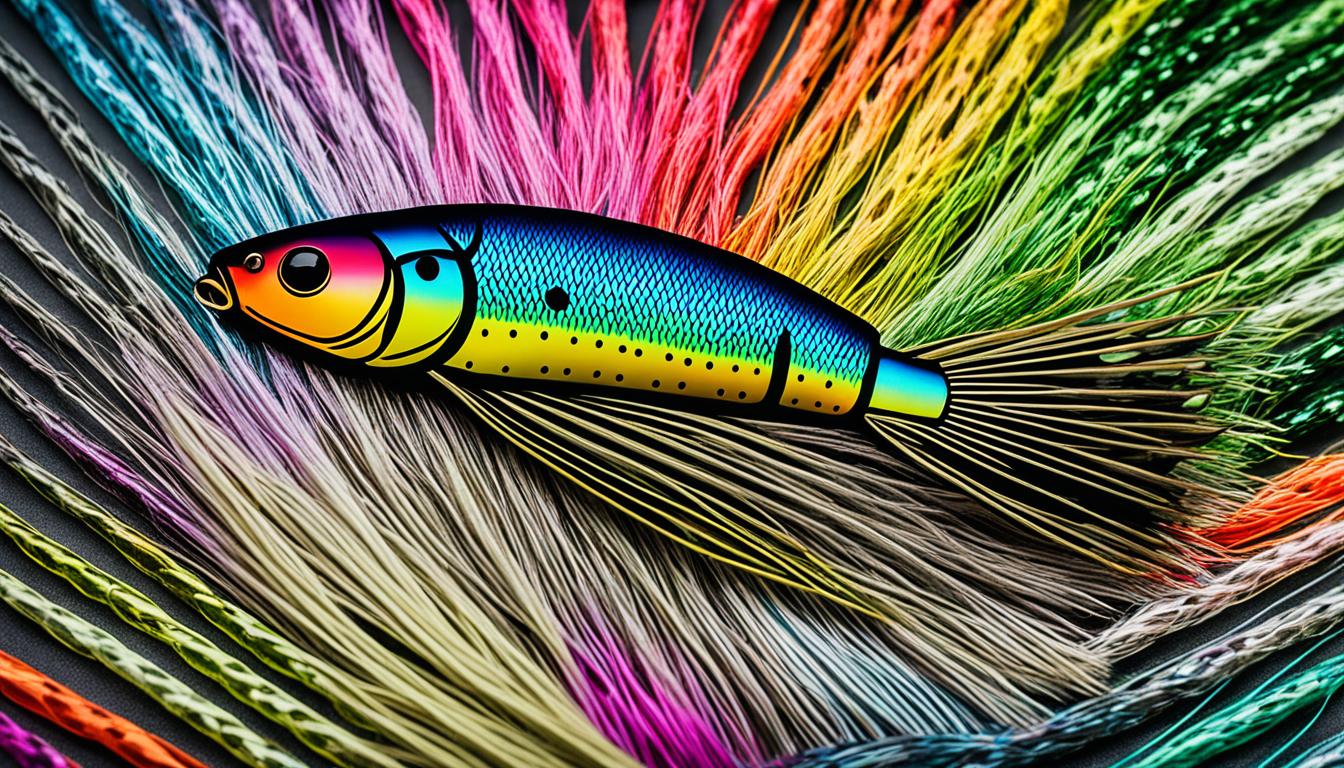Nymph tying is a vital skill for fly anglers looking to imitate aquatic insects and catch more trout. By mastering nymph tying techniques, we can create realistic flies that effectively mimic the larvae and nymph stage of insects commonly found in trout streams. With the right materials and techniques, we can create flies that sink and move naturally in the water, increasing our chances of fooling trout into biting.
In this article, we will explore the key aspects of nymph tying, including hook selection, weighting flies, using beadheads, tying with flash, and more. Whether you are a beginner or an experienced fly tier, these nymph tying techniques will take your fly fishing game to the next level.
Key Takeaways:
- Mastering nymph tying techniques is crucial for fly anglers targeting trout.
- By imitating underwater insects, we increase our chances of attracting and catching trout.
- Key aspects of nymph tying include hook selection, weighting flies, using beadheads, and incorporating flash.
- Nymph tying techniques can be applied by both beginners and experienced fly tiers.
- By practicing and mastering these techniques, we can enhance our success in fly fishing.
Understanding Fishing Hook Size and Shape
When it comes to nymph tying, understanding fishing hook size and shape is crucial. Different patterns require different hooks, and selecting the right size and shape can greatly impact the success of your nymph flies. It’s important to know the terminology associated with hooks, such as the eye, bend, and barb.
Nymph hooks are often shorter and more compact, while dry fly hooks are lighter and intended to float on the surface. Additionally, hook sizes can be a bit confusing, with larger numbers indicating smaller hooks. By understanding hook size and shape, you can choose the right hooks for your nymph tying projects and create flies that effectively imitate underwater insects.
“Understanding hook size and shape is crucial for successful nymph tying. By choosing the right hooks, you can create realistic imitations that attract trout.”
The Importance of Hook Size and Shape
Hook size refers to the actual physical size of the hook. It is determined by the gap width or the distance between the shank and point of the hook. Smaller hook sizes are typically used for smaller flies, while larger hook sizes are used for larger flies. It’s important to match the hook size to the size of the insect you are trying to imitate.
Hook shape refers to the overall design and curvature of the hook. The shape of the hook can impact how the fly moves in the water and how it sits on the surface. Understanding hook shape allows you to choose hooks that best imitate the behavior and appearance of aquatic insects.
Choosing the Right Hooks
When selecting hooks for your nymph tying projects, consider the specific patterns you plan to tie and the insects you are imitating. Nymph hooks are often designed with a curved or down-turned eye, which helps create a more natural swimming motion in the water. Dry fly hooks, on the other hand, have an upright eye to keep the fly floating on the surface.
Here are some popular hook brands that offer a wide range of hook sizes and shapes:
- Mustad
- Orvis
- Umpqua Feather Merchants
- Daiichi
These brands offer hooks specifically designed for nymph tying and dry fly tying, ensuring you have the right tools for the job. It’s also important to consider the materials you will be using when selecting hooks, as some hooks may work better with certain types of fly tying materials.
In Summary
Understanding fishing hook size and shape is essential for successful nymph tying. By choosing the right hooks, you can create flies that effectively imitate underwater insects and attract fish. Consider the specific patterns you plan to tie, the insects you are imitating, and the materials you will be using when selecting hooks. With the right hook size and shape, you’ll be well on your way to tying realistic and effective nymph flies.
Fly Tying Thread Base
When it comes to nymph tying, the thread base serves as the foundation for your fly. It plays a crucial role in securing the materials in place and providing a smooth finish. Starting at the hook eye and wrapping back to the desired location, we minimize the chances of materials twisting or becoming loose during the tying process. But choosing the right thread size is equally important, as different patterns require different thread thicknesses. By understanding the significance of the thread base and carefully selecting the proper tying materials, we can create nymph flies that are not only durable but also well-constructed.
Here’s a step-by-step guide to applying the thread base:
- Start at the hook eye and wrap the thread around the shank, moving towards the bend.
- Cross the thread over the hook shank and wrap it back towards the hook eye, creating a smooth and secure foundation.
- Make sure to apply consistent tension throughout the process, ensuring the thread is neither too loose nor excessively tight.
Choosing the right tying materials is also essential for a successful fly. Here’s a table highlighting some popular thread options:
| Thread Brand | Thread Size | Common Uses |
|---|---|---|
| MFC Thread | 6/0 | General nymph tying and small flies |
| Uni-Thread | 8/0 | Smaller nymphs, dries, and midges |
| Veevus Thread | 14/0 | Micro nymphs and tiny flies |
Remember, the thread base is the building block for your nymph flies. It provides stability and ensures the longevity of your creations. So take your time, choose the right thread size, and use it as the solid foundation for crafting beautiful and effective nymph flies.
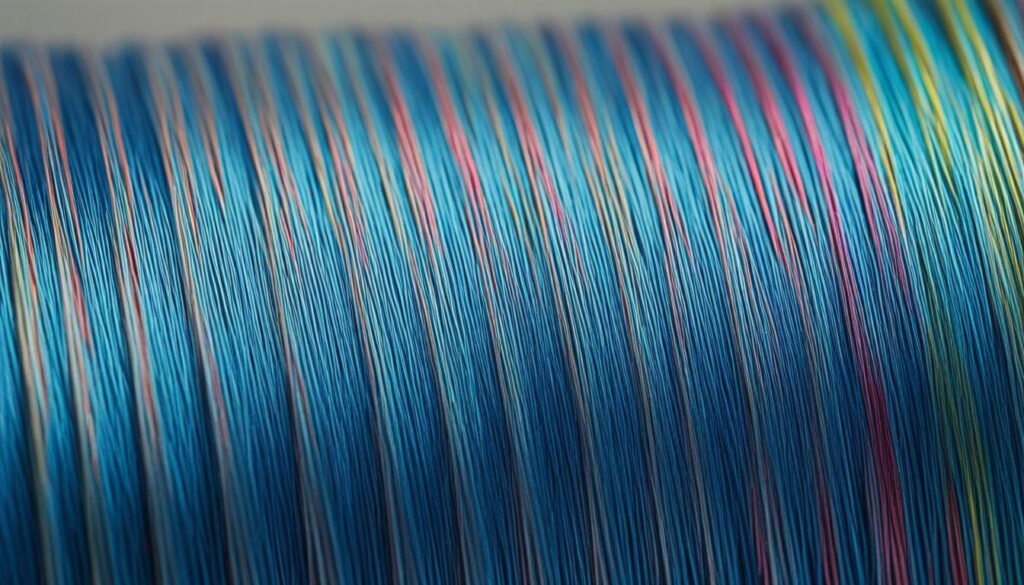
Weighting a Nymph
Adding weight to a nymph fly is essential for achieving the desired sinking depth in the water column. There are various methods to accomplish this, including using lead wire, tungsten beads, or weighted beadheads.
When deciding how much weight to add, consider factors such as water depth and current speed. These variables will help determine the ideal amount of weight necessary for your fishing situation.
Tungsten beads are a popular choice among Euro-style nymph anglers. They provide the required weight without increasing the fly’s size, allowing for a more realistic presentation. Additionally, flattening the wire will help mimic the natural shape of aquatic insects.
By understanding and utilizing different techniques for weighting nymphs, you can create flies that quickly sink to the desired depth and effectively attract trout.
Methods for Weighting Nymphs:
- Lead wire
- Tungsten beads
- Weighted beadheads
Experimentation with different methods and weights will help you determine what works best for your fishing style and conditions.
Whether you’re fishing in shallow or deep water, having a variety of weighted nymphs in your fly box will give you the flexibility to adapt to different fishing scenarios.
Beadhead Flies
In the world of fly fishing, beadhead flies have gained popularity among nymph anglers. These flies feature a weighted bead near the head, which adds both weight and a realistic imitation of a nymph’s body. The weighted bead helps the fly sink to the desired depth, allowing for precise presentation to trout.
What sets beadhead flies apart is their ability to attract fish with a touch of sparkle. The bead reflects light, mimicking the natural flash of an insect in the water. This added flash can be a game-changer, enticing trout to strike.
Beads for fly tying come in various colors and sizes, giving anglers the opportunity to match the specific insect they are imitating. Whether you are imitating a mayfly, caddisfly, or stonefly, there is a bead color and size to suit your needs.
Enhancing the effectiveness of beadhead flies:
- Incorporate flash materials: Adding flash to your beadhead nymph flies can further enhance their effectiveness. Flash materials, such as Flashabou and Krystal Flash, can mimic the appearance of air bubbles and other natural irregularities in the water. The flash adds movement and sparkle, making your fly even more enticing to trout.
- Experiment with different bead colors and sizes: Don’t be afraid to experiment with different bead colors and sizes to match specific hatch conditions. Adaptability is key when it comes to fooling selective trout.
By incorporating beadheads and flash into your nymph flies, you can create irresistible imitations that increase your chances of success on the water.
| Beadhead Fly Pattern | Bead Color | Sizes Available |
|---|---|---|
| Pheasant Tail Nymph | Gold | 14, 16, 18 |
| Hare’s Ear Nymph | Copper | 12, 14, 16 |
| Prince Nymph | Black | 12, 14, 16 |
| Caddis Pupa | Olive | 14, 16, 18 |
Adding Flash
Adding flash to your nymph flies can significantly enhance their ability to attract fish. Flash materials, such as Flashabou and Krystal Flash, are designed to imitate the natural irregularities found in the water, such as air bubbles. When incorporated into your flies, they create movement and sparkle, making them more enticing to trout.
While it may seem counterintuitive to add synthetic materials to your flies, fish are naturally attracted to the flash and will readily strike at these imitations. By experimenting with different amounts and colors of flash, you can determine what works best in your specific fishing conditions.
For example, the Flashabou material is known for its brilliant shine and is often used to imitate the scales of baitfish. On the other hand, Krystal Flash provides a more subtle sparkle and can be utilized to mimic the underwater reflection of sunlight.
Incorporating flash into your nymph tying not only adds visual appeal but also increases your chances of success on the water. When a nymph fly with flash drifts in front of a trout, the flash acts as a trigger, enticing the fish to strike.
“The flash in the nymph fly can be the key to triggering a trout’s feeding response. It adds that extra bit of attraction that can make all the difference between a fish ignoring your fly and aggressively striking it.”
By carefully selecting and adding flash to your nymph flies, you can create highly effective imitations that imitate the natural prey of trout and attract fish with their irresistible sparkle.
Example Fly Tying Materials with Flash
| Material | Description |
|---|---|
| Flashabou | A synthetic flash material that provides a brilliant sparkle and is commonly used to mimic the scales of baitfish. |
| Krystal Flash | A subtle flash material that mimics the underwater reflection of sunlight and adds a more natural sparkle to flies. |
Integrating flash materials into your nymph tying arsenal is a valuable technique that can dramatically increase your success as a fly angler. By attracting more fish and enticing them to strike, you’ll have a greater chance of hooking into your target species.
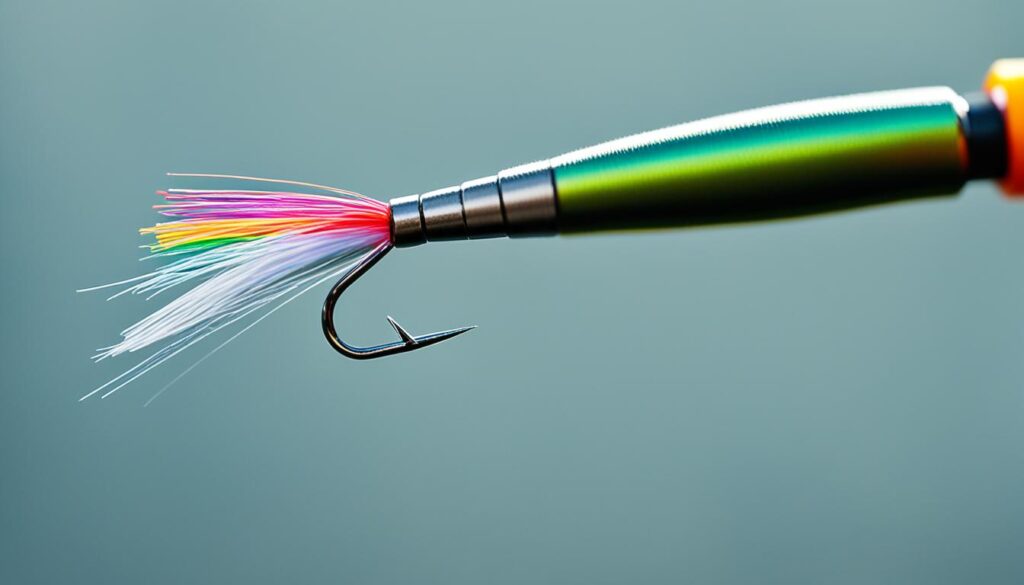
Conclusion
Mastering nymph tying techniques is essential for all fly anglers, especially when targeting trout. By understanding fishing hook size and shape, selecting the right materials, and incorporating weight and flash, we can create nymph flies that mimic underwater insects and attract fish effectively. Nymph tying allows us to imitate the natural prey of trout, significantly increasing our chances of success on the water.
Whether we are beginners or experienced fly tiers, these nymph tying techniques will elevate our fly fishing game and help us catch more trout. By utilizing our fly tying materials and practicing these techniques, we can become proficient in the art of nymph tying. So let’s grab our gear and start exploring the fascinating world of nymph tying. Happy fishing!
FAQ
What is nymph tying?
Nymph tying is a fly tying technique used to create flies that imitate the larvae and nymph stage of aquatic insects, commonly found in trout streams. It is a vital skill for fly anglers looking to catch more trout.
Why is understanding fishing hook size and shape important in nymph tying?
Different patterns require different hooks, and selecting the right size and shape can greatly impact the success of your nymph flies. Understanding hook terminology and selecting the proper hooks allows you to create flies that effectively imitate underwater insects.
What is the role of the thread base in nymph tying?
The thread base serves as the foundation for the fly, helping to secure the materials in place and provide a smooth finish. It is essential for creating durable and well-constructed nymph flies.
How can I add weight to my nymph flies?
Weight can be added to nymph flies using lead wire, tungsten beads, or weighted beadheads. The amount of weight required depends on the fishing situation, and weighting the flies properly ensures they sink to the desired depth.
What are beadhead flies and why are they popular?
Beadhead flies are nymph flies that feature a weighted bead near the head. The bead adds weight to the fly and creates a realistic imitation of a nymph’s body. They are popular among nymph anglers for their effectiveness in attracting fish.
How does adding flash enhance my nymph flies?
Flash materials, such as Flashabou and Krystal Flash, mimic natural irregularities in the water and add movement and sparkle to nymph flies. This makes them more enticing to trout and increases your chances of success on the water.
How can mastering nymph tying techniques improve my fly fishing game?
Mastering nymph tying techniques allows you to create realistic fly imitations of underwater insects, increasing your chances of attracting and catching trout. It is a crucial skill for fly anglers, and these techniques will elevate your fly fishing game.
